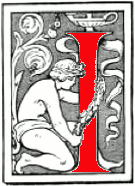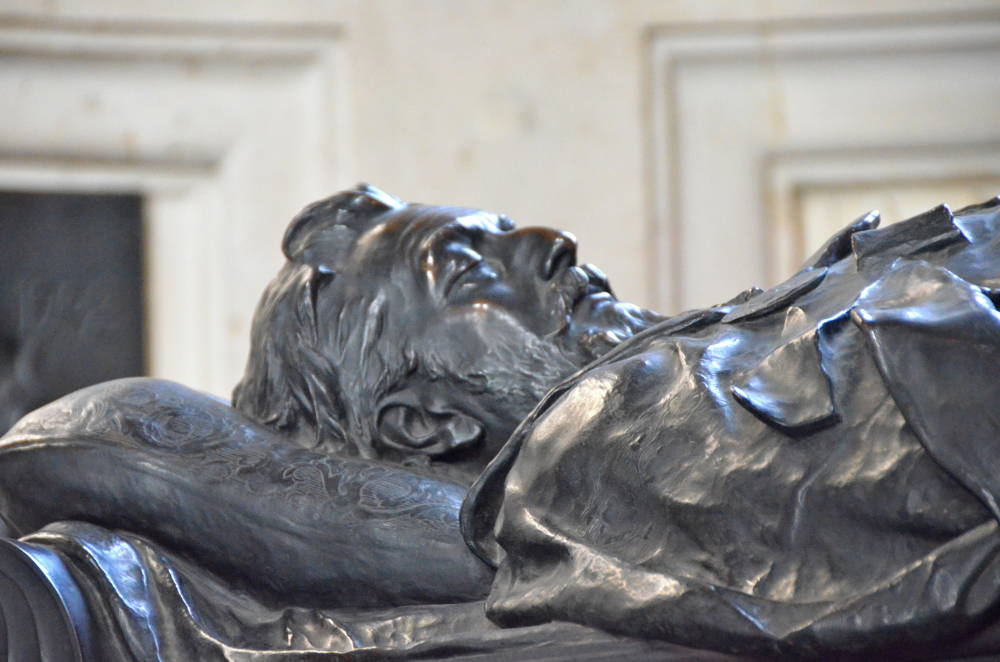Mary and the Academy exhibition, 1895

n the event, Mary Lloyd was the star of the Academy 1895, appearing in no less than eight major paintings. Besides featuring in Frederic Leighton's Lachrymae, 'Twixt Hope and Fear and Flaming June (all on show in gallery No.3) John Everett Millais now showed her off in St Stephen (Gallery No.1), A Disciple and Speak! Speak! (both Gallery No.3), the first and last time Mary would feature in Millais' work on the walls of the Academy. The display of five major pictures featuring Mary, shown together in Gallery No.3, must have made quite an impact and demonstrated her importance to both Leighton and Millas at this late stage in their careers. However, it was rarely the custom for reviewers to identify models and Mary's presence went unnoted. On display in the Drawings Gallery were a number of chalk studies for Corinna as well as Lachrymae.
Writing from Algiers, Leighton assured Millais: "I am longing to see St Stephen" (qtd. in Millais II: 319). After his return, Leighton would respond to Millais' early Christian A Disciple by painting Mary in a similar attitude as Faith (Haworth Art Gallery), a bust-length Antique pagan figure wearing white classical dress, a wreath adorning her head.

Frederic Leighton's Faith (1895). [Click on all the images for more information about them, and to see larger versions.]
Two other artists also exhibited pictures in 1895 for which Mary was the inspiration. Herbert Draper had attended the Academy Schools, winning the Academy Travelling Scholarship in 1889. Encouraged by Leighton, he had taken a studio in Pembroke Studios, off Pembroke Gardens, south of Kensington High Street. Leighton also introduced him to Mary Lloyd. Draper, who had first drawn Mary in 1893, now featured her as Pallas Athene in The Youth of Ulysses (Gallery No.8, current location unknown). The work depicted an imaginary incident, pre-the Trojan War. Mary, as the goddess of war and wisdom, crowned with olive leaves and carrying a defensive spear, gazes down beneficently on the unsuspecting youth who she will aid during the coming conflict and beyond, as he matures into a wily Greek hero.
Frank Dicksee's 1895 picture was A Reverie (Gallery No.1, now Walker Art Gallery), which illustrated lines from a poem by Louisa Stevenson: "In the years that have fled/ Lips that are dead/ Sang me that song," which were quoted in the Academy Exhibition Catalogue. Set in an elegant, lamp-lit drawing room one evening after dinner, a wife, seated at the piano, plays an air which reminds her brooding husband of another woman whom he had once loved. Using a photograph, Dicksee painted himself as the husband and posed Mary as the wispy spectre who now appears to him, unseen by his wife. A reviewer considered the apparition "an excellent ghost indeed."

Frank Dicksee's A Reverie (1895).
Dicksee's picture was hung opposite Millais' Speak! Speak!, for which Mary had been posing at the same time. Dicksee, too, was interested in the supernatural and was an Associate of the Society for Psychical Research. The Society investigated seances, including happenings at William Blake Richmond's home in Hammersmith (see below). Leighton too was known to be interested in seances. The description of one of Richmond's resident ghosts, the Grey Lady, wearing a long, grey, filmy garment, may well have influenced how Dicksee depicted Mary in A Reverie. The critic for The Telegraph newspaper commented that Millais' picture had just escaped "a certain sentimentality," whereas Dicksee's had not.

Alma Tadema's A Coign of Vantage, 1895.
Lawrence Alma Tadema's A Coign of Vantage (private collection), also dated to 1895, but seemingly not exhibited at the Academy, formed a contrast to these two pictures. A sunlit, Mediterranean scene features Mary, dressed in pale yellow robes, crowned with anemones, leaning over a marble parapet as one of three fashionable Roman women enthusiastically anticipating the arrival of a ship seen far below returning from some maritime adventure.
Leighton was involved in organising an exhibition of lithography in 1895 and when Dicksee was invited to participate, he contributed a study of Mary's clear-cut profile, facing left, her hair kept in place by a fillet. After their exhibition in Paris, the prints were on show at the Rembrandt Gallery, Vigo Street and limited runs of 75 of each were made for sale.
Leighton was back in London in June 1895 and would have seen the full array of pictures featuring Mary on the walls of the Academy. Though his health was no better and he was suffering frequent attacks of debilitating angina, he did not spare himself. He immediately resumed his Presidential duties and his work on the group of pictures he hoped to submit to the Academy in 1896.
By the time Leighton received a Peerage in the New Year's Honours of 1896, his illness was in its final stages. Nevertheless, as a workaholic, he continued to paint. On his easel, just three days before his death, was his poignant image of Clytie (Leighton House Museum). The story, from Ovid's Metamorphoses, told of the Roman nymph who had been rejected by the Sun god. She pined for nine days and nights as the sun disappeared from the sky, until the gods took pity and transformed her into a heliotrope/sunflower that turns its head to follow the course of the sun across the sky. Clytie is shown with head thrown back, stretching imploring arms towards her idol, the Sun, a cascade of auburn hair tumbling down her back.

Leighton's Clytie, 1896.
The undraped figure studies for Clytie, with fine, wispy hair, had been made some years before. But by the time Leighton was finishing the picture, Mary Lloyd was involved. He made a study of her abundant, wavy locks, telling an interviewer just a few days before his death: 'To carry out my intention, I have changed my model's hair from black to auburn'. Mary's hair was black. Auburn was the colour of the hair of the Sun god, so it was appropriate that Leighton should paint a devotee of Apollo with auburn hair.
Clytie can be seen as Leighton's own farewell. He too was a devotee of Apollo, the god of art, beauty, music and poetry, all so important to Leighton who had always loved the light and colour of the Mediterranean.
On 25 January 1896, three days after he put down his brush for the last time, Leighton died of heart failure in his spartan bedroom at Leighton House. He was 65. His coffin was set up in his studio, so that visitors could call and pay their respects. Around the coffin, on easels, were the unfinished pictures he had been preparing for the Academy. In the event, only Clytie went on show as, in the year of their death, a Royal Academician was only entitled to exhibit one picture. Clytie was chosen as the one to best represent Leighton. The Fine Art Society bought Clytie and the copyright to reproduce it, issuing an illustrated advertising brochure which stated that the price of the Artist's Proofs would be six guineas.

Leighton's head, on his memorial by Sir Thomas Brock at St. Paul's.
In recognition of her importance to Leighton's late work, Mary received an invitation from the Academy to sit in a reserved seat at his grand funeral held at St. Paul's Cathedral on 3 February. The Graphic magazine had purchased Flaming June, together with the copyright, and they displayed the picture in the windows of their office on the Strand, on the route that Leighton's cortège took on its way to St. Paul's. Millais was a pall-bearer, with the task of placing the official wreath of the Academy on the coffin after it had been lowered into the Crypt. Frank Dicksee viewed the funeral from the choir. His elaborate wreath bore the dedication: "in affectionate remembrance of my beloved President."
On 20 February, Millais was unanimously elected as President to succeed his friend. Despite his own illness and misgivings, Millais responded to the entreaties of his fellow artists that he fill the role, but he was only able to make his way painfully around the galleries before the Private View, supported on the arm of the Secretary of the Academy. He had been diagnosed with cancer of the throat and underwent a tracheotomy in May. From that time, until his death in August, he never left his bed, communicating via a slate. Mary kept the Order of Service for Millais' funeral, also in St Paul's, so it is likely that she was present at the event. Though Millais had wanted Dicksee to succeed him, Edward Poynter was elected, making 1896 the only year in the history of the Academy in which three artists served as President. Dicksee was eventually elected President in 1924.
Links to Other Parts
- Part I: The First Sittings; the Royal Academy Exhibition of 1893
- Part II: Sitting for Millais; Mary and the Royal Academy Exhibition of 1894
- Part IV: After Leighton and Millais: 1896
- Part V: Later Appearances; the Final Years; Bibliography
Created 25 September 2024